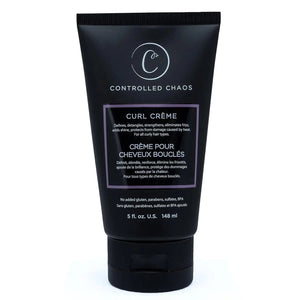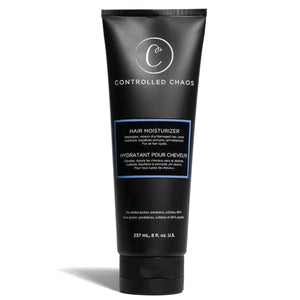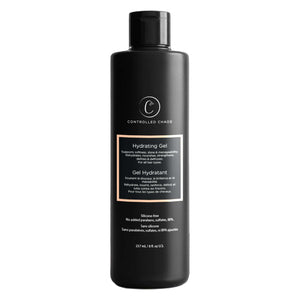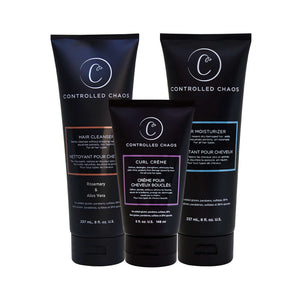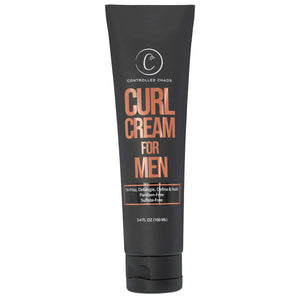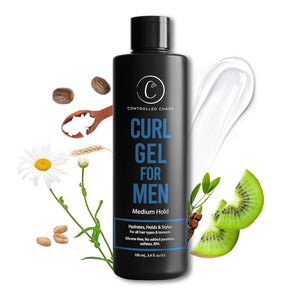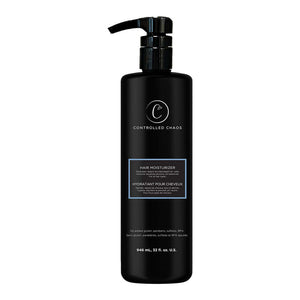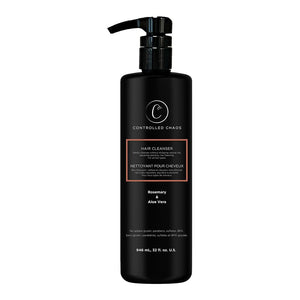

Curly hair is unique and diverse, but requires special care to maintain its health. Whether you have loose waves or voluminous coils, understanding what defines curls and how to care for them is essential. In this blog, we will consider what curly hair is.
Curly hair is defined by its natural wave or curl pattern, which is determined by the shape of the hair follicle. Unlike straight hair, curly strands emerge from oval or asymmetrical follicles, causing the hair to bend and form spirals. The tighter the curl, the more elliptical the follicle.
Types of Curly Hair
Curly hair is classified into different types based on curl tightness and texture:
1. Wavy Hair (Type 2)
-
Loose S-shaped waves
-
Tends to be frizz-prone
-
Can range from fine to coarse
2. Curly Hair (Type 3)
-
Well-defined ringlets or spirals
-
More volume and bounce
-
Prone to dryness and frizz
3. Coily Hair (Type 4)
-
Tight, springy curls or zig-zag patterns
-
High shrinkage and density
-
Most fragile and requires intense moisture
How to Care for Curly Hair?
Curly hair requires a specialized routine to maintain moisture and enhance curl definition. Here are key steps for an effective curly hair care regimen for different curly hair types:
1. Hydration is Key
Curly hair is naturally drier because its shape prevents natural oils from traveling down the shaft. Use a hydrating shampoo and conditioner to keep curls soft and manageable.
2. Use a Gentle Cleanser
Harsh shampoos strip moisture from curls, making them dry and brittle. Opt for sulfate-free hair cleansers that cleanse without removing essential oils.
3. Apply a Leave-In Conditioner
A leave-in conditioner helps lock in moisture, define curls, and protect against frizz. It’s especially beneficial for curly and coily hair.
4. Choose the Right Styling Products
-
Curl Creams – Enhance definition and add moisture.
-
Gels or Mousses – Hold curls in place and reduce frizz.
-
Oils or Serums – Seal in moisture and add shine.
5. Use the Right Drying Techniques
-
Microfiber Towels or Cotton T-Shirts – Reduce frizz when drying hair.
-
Air-Drying or Diffusing – Prevents excessive heat damage.
6. Detangle with Care
Curly hair is prone to tangles. Always detangle your hair when it's wet, and use a wide-tooth or wooden comb to minimize breakage.
7. Protect Curls at Night
Use silk or satin pillowcases and protective hairstyles, such as braids or buns, to minimize friction and prevent frizz while sleeping.
Common Curly Hair Problems and Solutions
1. Frizz
Solution: Use a leave-in conditioner and anti-frizz serum, and avoid rough towel drying.
2. Dryness
Solution: Deep condition weekly and use hydrating products.
3. Shrinkage
Solution: Use stretching techniques, such as twist-outs or banding.
4. Breakage
Solution: Minimize heat styling, use protective styles, and avoid harsh chemicals.
Curl Routine with Proper Techniques
Aside from using the right products, your styling techniques are crucial. Here are a few effective methods to enhance your natural curly hair texture:
1. The “Praying Hands” Method
Instead of raking products through your curls, try the praying hands method. Gently smooth the product between your palms and glide it over your curls. This technique reduces frizz and ensures even product distribution.
2. The Scrunching Technique for Added Bounce
Scrunching helps enhance curl definition and volume. After applying a leave-in conditioner or curl cream, cup your hair in your hands and scrunch upward. This encourages curl formation and minimizes flatness.
3. Finger Coiling for Defined Ringlets
For tighter, more uniform curls, wrap small sections of damp hair around your finger to encourage a spiral shape. Let them air dry or diffuse for long-lasting definition.
4. The “Plopping” Method for Frizz-Free Drying
After washing, use a cotton T-shirt or microfiber towel to wrap your hair in a loose turban. This technique absorbs excess water while preserving curl shape and reducing frizz.
5. Layering Products for Maximum Hydration
A single product may not be enough to keep curls moisturized all day. Use a layering technique, starting with a water-based leave-in conditioner, then a curl cream, and sealing with a lightweight oil or gel. This locks in moisture and enhances longevity.
Seasonal Curl Care Tips
Curly hair reacts differently to seasonal changes, so adjusting your routine accordingly can help maintain its health and definition.
Spring & Summer: Combat Humidity and Frizz
-
Use anti-humidity products to control frizz.
-
Opt for lightweight styling creams and gels to avoid buildup.
-
Protect hair from sun damage with hats or UV-protectant sprays.
Fall & Winter: Prevent Dryness and Breakage
-
Enhance deep conditioning treatments to combat dryness caused by cold weather.
-
Switch to heavier creams and oils to seal in moisture.
-
Wear protective styles, such as braids or buns, to shield your hair from harsh elements.
Myths About Curly Hair Debunked
There are numerous misconceptions about caring for curly hair. Let’s clear up some common myths:
Myth 1: You Should Brush Your Curls Daily
Truth: Brushing disrupts curl patterns and causes frizz. Use a wide-tooth comb only when detangling wet hair. Using the right hair tool is essential for maintaining your hair's health.
Myth 2: Trimming Hair Makes Curls Grow Faster
Truth: Trimming removes split ends and prevents breakage, but does not directly affect growth.
Myth 3: Curly Hair Doesn’t Need Oil Because It’s Already Oily
Truth: The natural oils from the scalp have a more challenging time reaching the ends of curly hair, making it more prone to dryness. Light oils can help lock in moisture.
Myth 4: Shampooing Less Often Means Healthier Curls
Truth: While frequent washing with harsh shampoos can dry out curls, skipping washes can lead to buildup. Instead, opt for sulfate-free cleansers and co-wash when needed.
Understanding Curl Porosity and Its Impact on Hair Care
One of the most overlooked aspects of curly hair care is porosity, which affects how well your hair absorbs and retains moisture. Knowing your curl’s porosity level can help you choose the right products and techniques for optimal hydration.
Low Porosity Hair
-
The cuticles are tightly packed, making it hard for moisture to penetrate.
-
Water tends to sit on the surface rather than absorb quickly.
-
Best suited for lightweight, water-based products and heat-assisted deep conditioning.
Medium Porosity Hair
-
The cuticles are slightly open, allowing moisture to enter and be retained efficiently.
-
It can be used as a mix of lightweight and rich products without excessive buildup.
-
Requires balanced hydration and protein treatments to maintain strength.
High Porosity Hair
-
The cuticles are often open or damaged, resulting in rapid moisture loss.
-
Prone to frizz, tangling, and breakage if not properly moisturized.
-
Needs thicker creams, oils, and protein treatments to strengthen the hair shaft.
To determine your hair’s porosity, try the "Water Test": Drop a clean hair strand into a glass of water. If it floats, you have low porosity; if it sinks slowly, it’s medium porosity; if it sinks quickly, it’s high.
Final thoughts
In short, the above blog has answered your question about what is considered curly hair. Caring for curly hair isn’t just about using the right products; it’s about understanding your unique curl pattern and treating your hair with the proper care. Experiment with different routines to find what works best for you. Controlled Chaos has the best range of products for curly hair. You can go with the one that suits your hair type.
FAQS
What defines curly hair?
Curly hair is defined by its natural shape, which forms waves, spirals, or coils instead of lying flat or straight. It usually has more volume and texture, and can be prone to dryness.
How to identify your curl type?
You can identify your curl type by observing the pattern of your strands. These patterns range from loose waves to tight coils, matching common curl categories such as wavy (2A–2C), curly (3A–3C), or coily (4A–4C).

